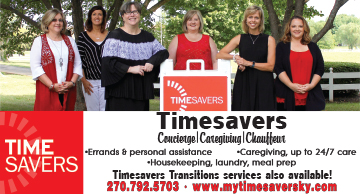You may know that I work within a service that provides care for people with dementia and provides as much respite and support as possible for their families. In seeking to provide the highest quality of care, I am constantly trying to better educate myself and our staff about how to best communicate and interact with people with dementia, how to provide the support their families may need, and how to make the quality of life for both the person with dementia and their entire family as high as it can be.
Toward that goal, I have had the opportunity to learn from some outstanding experts and professionals in the field of dementia care. Dementia is an ever-increasing diagnosis in the United States, and it will serve all of us well to learn some basic communication techniques and some practical tips in order to make sure people with dementia are included, respected, and cared for and their families are not isolated or stigmatized in any way. So, here we go with tips from Teepa Snow, renowned dementia care expert.
- Always remember the person with dementia is doing the best they can. Behavior you may think is conscious is more likely unintentional.
- When approaching a person with dementia, don’t move too quickly or too closely into their personal space. Their visual range is far narrower than a person the same age without dementia, so remain in their visual range. Offer your hand and make eye contact, smile and call the person by name. Most people’s automatic response, which they will sustain well into the disease progression, would be to hold out their own hand. The largest percentage of people are right hand dominant, so as you gently grasp the person’s right hand, move to that dominant side to communicate. WAIT FOR THEIR RESPONSE – THIS CANNOT BE RUSHED OR FORCED.
- Once you have made the initial contact, get connected. Say something nice and form a relationship first. Say your name, followed by “and you are _____?” Offer a compliment – “your hair is beautiful;” “you must be so strong;” “you are very clever.” Share something about yourself – “I’m from Bowling Green, and you are from ___________?” Make a positive observation – “those are beautiful children;” “what a wonderful garden.” Find out more about the person with dementia.
- A person with dementia will let you know what they want, need, or think by what they show you (how they look); what they say (how they sound); and what they do (physical reactions). In turn, we should communicate taking into consideration how we say things, what we say, and how we respond to their reactions and behaviors. AS DIFFICULT AS IT MAY SEEM, BE EMPATHETIC.
- We can cue and help a person with dementia with visual cues, such as signs, pictures, props/objects, gestures, facial expressions, and demonstrations. We can use verbal cues, such as keeping things simple and short, and making the cues directed and matching to visual cues. Touch and tactile cues include touching a body part, or handing the person an item. Teepa Snow also teaches a trademarked Hand-under-Hand assist method that provides physical support, human touch, and mobility guidance.
– A few other visual cues that might help: highlighted schedules; familiar environments; familiar set-ups for tasks and activities; wearing name tags on the right side.
– A few verbal cues that might help: be respectful; ask permission to do things; invite, don’t order; ask for help or input, ask a favor, ask for support or understanding; be friendly not bossy; share responsibility rather than taking over; give up having to be “right”; when taking away one job, give another to replace it.
– A few touch cues that might help: responsive hugs; back rubs, with permission and only using one hand and slow motions; handshake greetings; use as many old habits as possible.
- There will be a time when you might need to help someone find their words. This is when the inevitable repeated stories will actually come in handy. Write those stories down so you will be able to insert words when the person with dementia can’t locate their words. Repeat their words back in a question to try to guide the conversation. Be positive and enthusiastic and try to redirect to new words, a new place, or a new activity.
This information barely scratches the surface of communicating and interacting with people with dementia, but we all have to start somewhere. Statistically speaking, there is no question we will all be touched by dementia in some way, whether with a family member, a friend, or in our work lives. So why not learn? It’s never too late.
-by Elizabeth Downing
About the Author: Elizabeth Downing is Director of Outreach for Timesavers Concierge, Caregiving & Chauffeur in Bowling Green, Kentucky. A 1982 graduate of WKU, Elizabeth is also an attorney, but found her passion in advocating and providing care for older adults and those with special needs. Elizabeth’s blog, at www.mytimesaversky.com/blog, seeks to raise awareness of issues relating to aging and caring for aging loved ones, and to let people know they are not alone in the journey. She has completed a Certificate in Care Management from Boston University, and facilitates two family caregiver support groups each month. Elizabeth also offers advisory and consulting services for families navigating life’s transitions.




